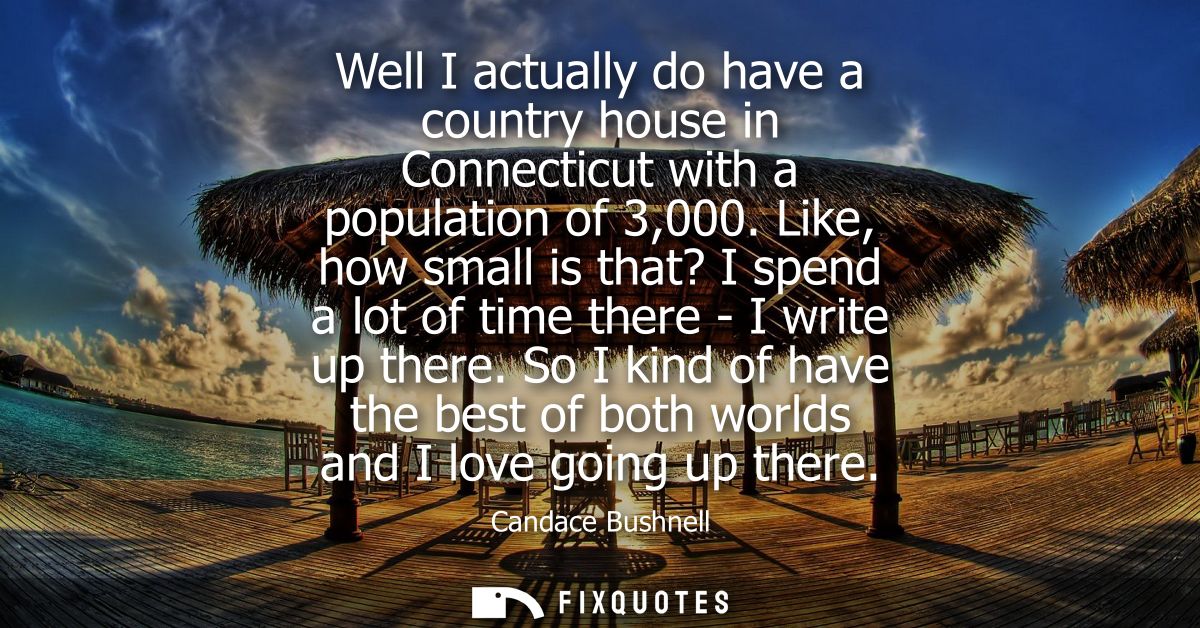"Well I actually do have a country house in Connecticut with a population of 3,000. Like, how small is that? I spend a lot of time there - I write up there. So I kind of have the best of both worlds and I love going up there"
About this Quote
Candace Bushnell reflects on the balance she enjoys between city life and the tranquility of a small town through her mention of a country house in Connecticut. She underscores the intimacy and close-knit nature of her chosen retreat, emphasizing the town’s tiny population of only 3,000 residents. Her question, “How small is that?” highlights a sense of wonder or perhaps even a bit of disbelief at how different it is from the busy, crowded places she might be more commonly associated with, such as New York City. Such a small town promises a sense of peace, quiet, and perhaps anonymity, contrasting sharply with the attention and bustle of urban environments.
Bushnell’s statement that she spends a lot of time in Connecticut and specifically uses it as a place to write suggests that the locale functions as both a refuge and a creative haven. She values the inspiration or headspace that comes from being removed from city distractions. Many writers and creative people find that quieter, slower-paced places can help them reconnect with themselves or tap into deeper creative currents. Her routine of retreating to the country hints at a self-awareness about her needs for both stimulation and solitude.
Her comment about having “the best of both worlds” draws attention to the modern desire to synthesize different lifestyles, refusing to settle for just one mode of living. The country house is not simply a symbol of wealth or luxury, but an expression of her need for balance. She enjoys the excitement, opportunities, and energy urban life offers, but equally treasures the property’s seclusion, peace, and the unique qualities of small town living. There is gratitude and delight in her summary, “I love going up there,” which conveys fulfillment found in choosing a lifestyle rhythm that alternates between two vastly different, yet complementary, environments.
More details
About the Author

